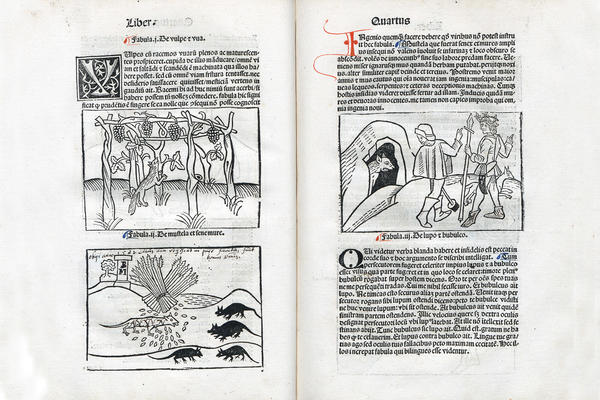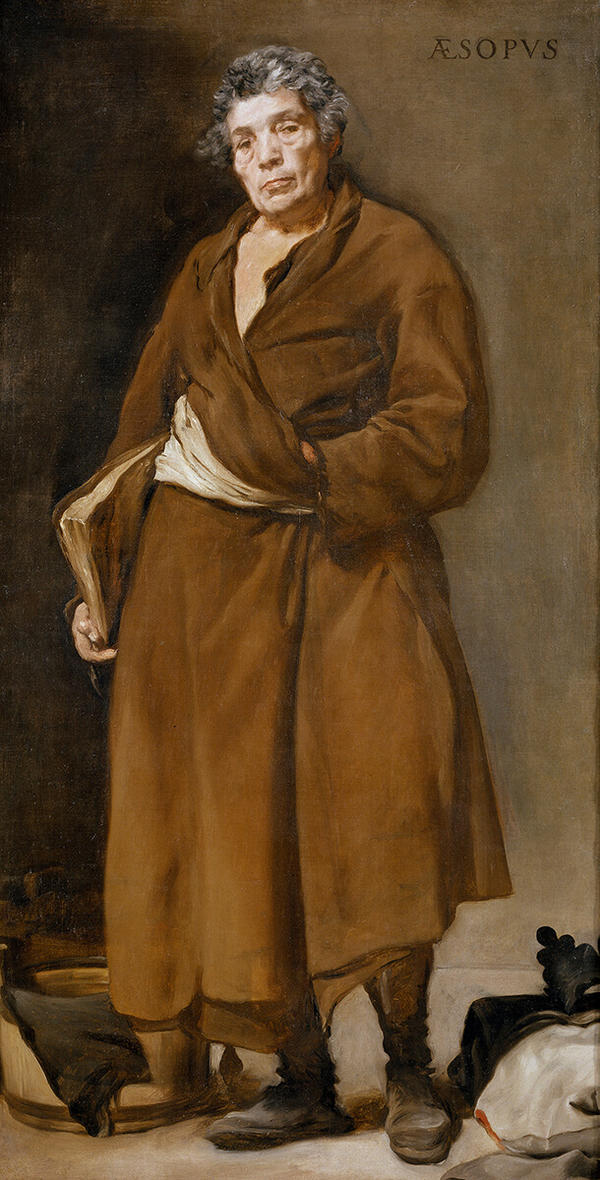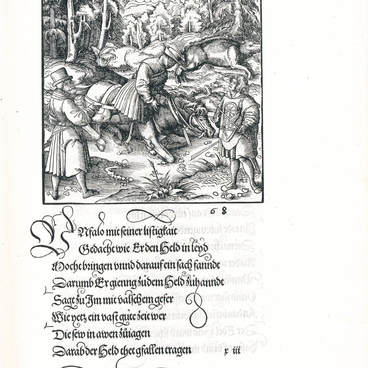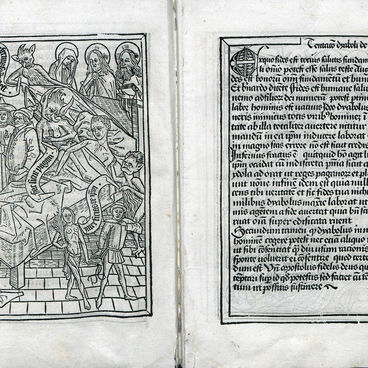In the 15th century, Aesop’s Fables were very popular; only the Bible outnumbered their publications. The total number was 130; twenty of them were illustrated. It was a book for everyone: people read and retold it at school and at home. Along with the Grammatica of Donatus and the Distichs of Cato, the Fables of Aesop were among the three mandatory books that started schooling. A significant number of the medieval manuscripts still exist; some of them are illustrated.
1 / 5
#1
Aesop
Fables
#2
#3
Diego Velázquez (1639—1640). “Aesop”. 1638
#4
The first printed edition of Aesop was published in Ulm, in the printing house of Johann Zeiner, in 1476, and was abundantly illustrated. Ulm humanist Heinrich Steinhöwel, the compiler of the book, disencumbered the fables of medieval strata, basing on sources closer to its ancient original. Steinhöwel’s book served as an example for all later editions of Aesop, not only in Germany. The book’s illustrations contributed a lot to its success. The master of woodcuts diligently and a little naively retells us the fables, trying to depict, with accuracy, different species of animals and the circumstances of events. Portraying not only the place or the storyline, as it had been before, he tries to describe the world around the characters and convey the content as accurately as possible.
#5
The exhibited edition, printed in Basel by Jacob Wolf no later than 1489, is illustrated with engravings that copy the images in Zeiner’s edition. The book also includes an anonymous late-antique novel ‘The Life of Aesop’.
The fables have endured 53 editions in national languages, 19 of which were in Germany. We know many of the fables from the works of Ivan Andreyevich Krylov, who translated the writings of Jean de La Fontaine, who had borrowed plots from Aesop.
The fables have endured 53 editions in national languages, 19 of which were in Germany. We know many of the fables from the works of Ivan Andreyevich Krylov, who translated the writings of Jean de La Fontaine, who had borrowed plots from Aesop.
read morehide
3
Open in app
Share








